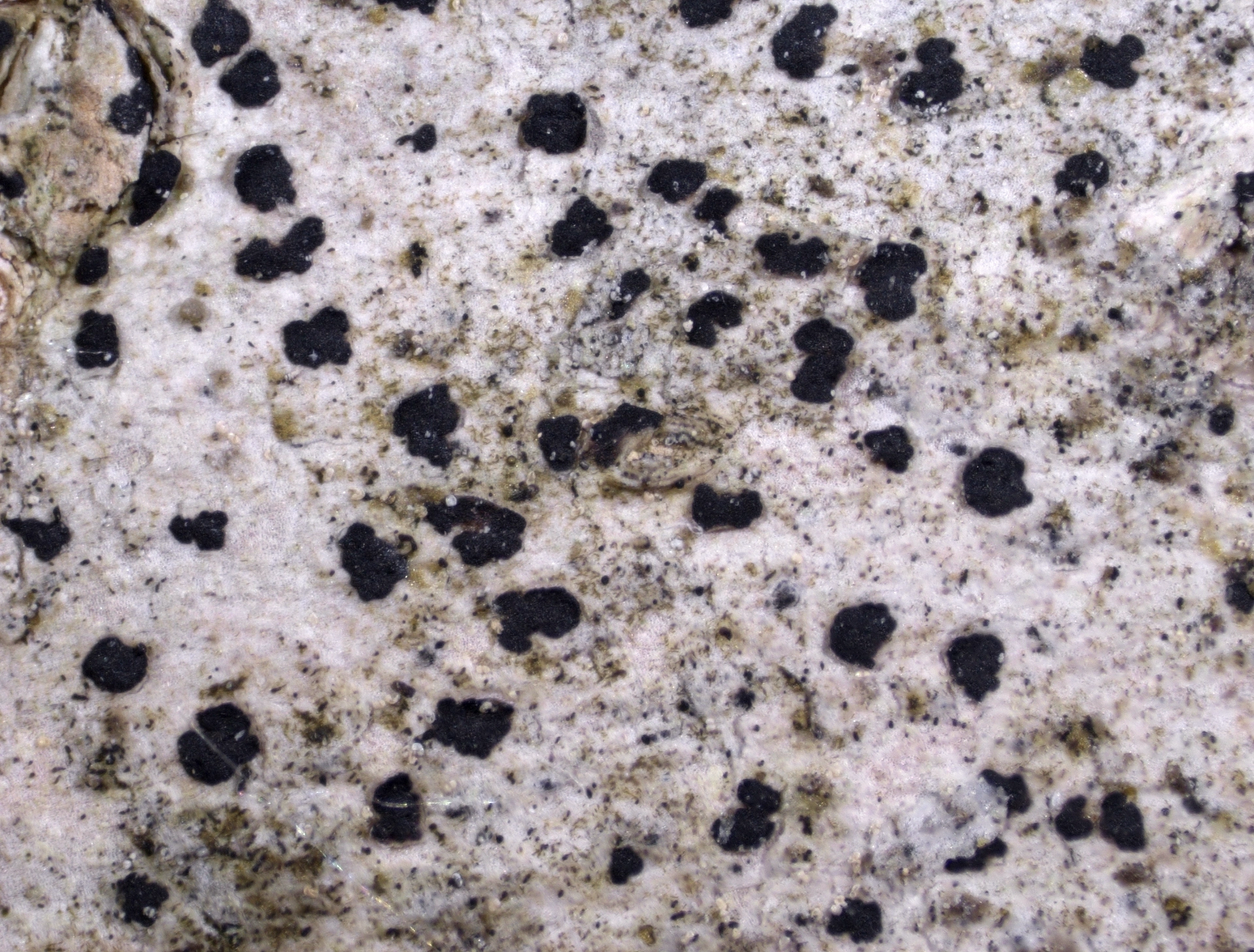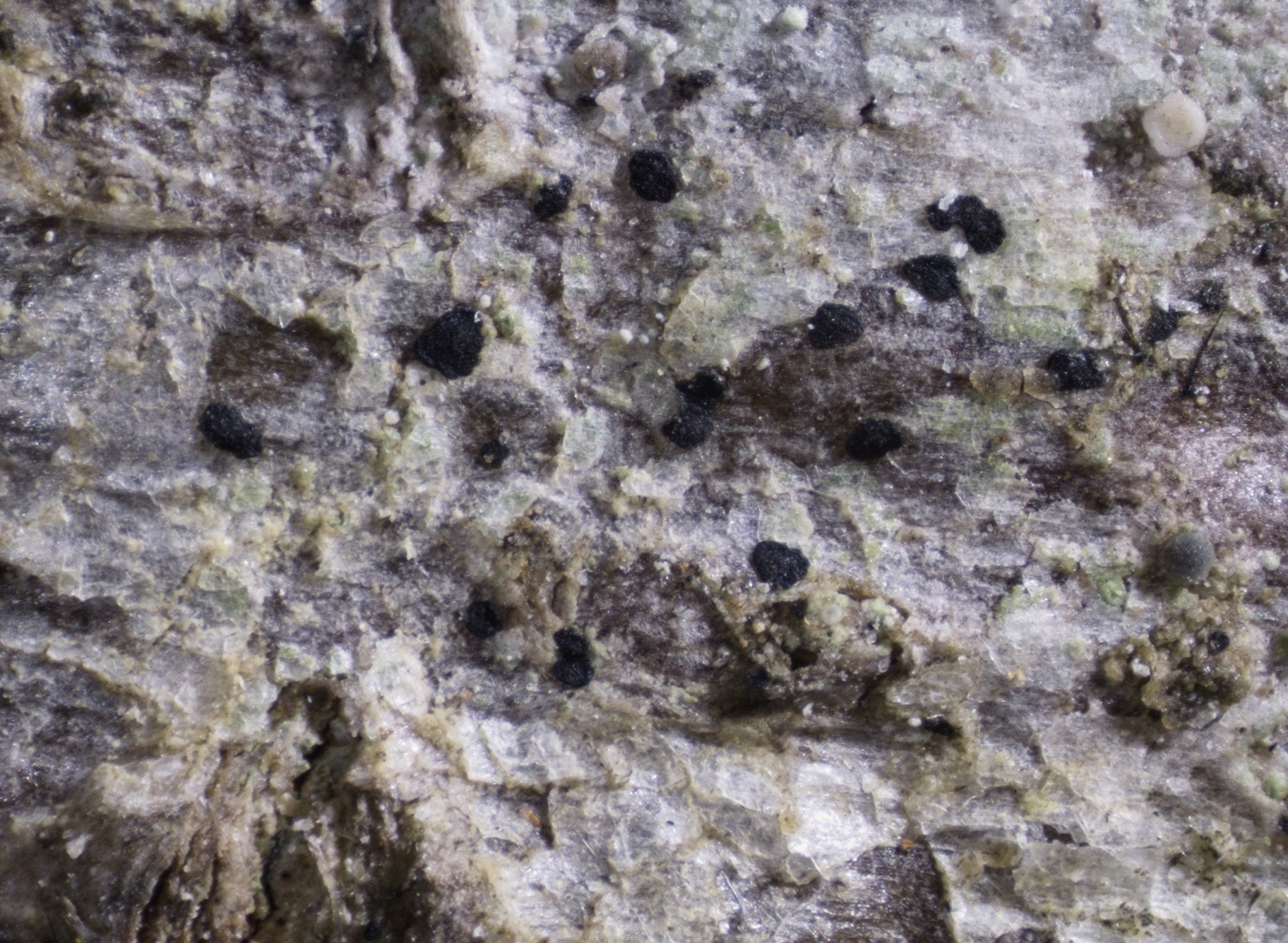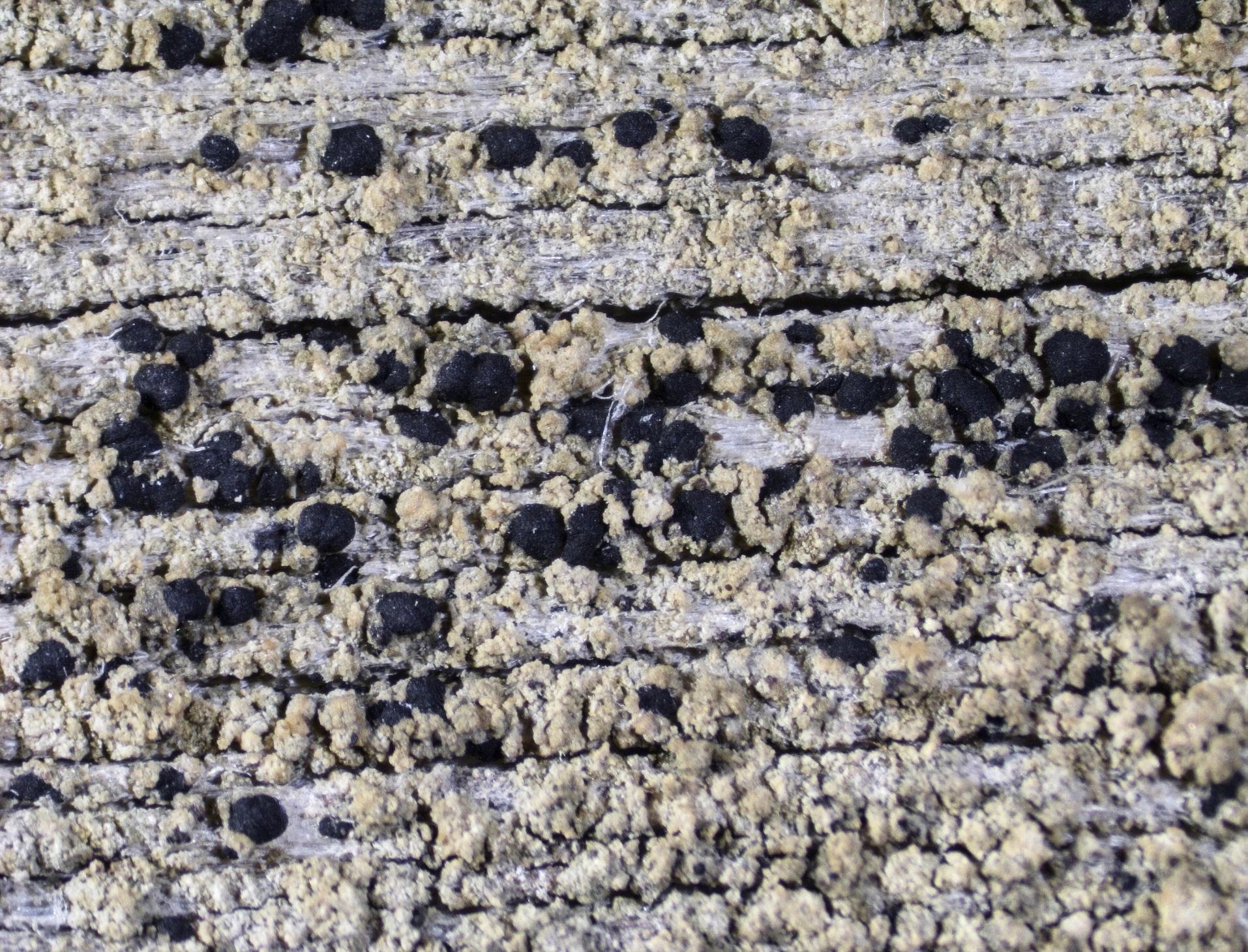Arthonia apatetica
Arthonia apatetica collected from Fraxinus excelsior near Igletjern in Øvre Eiker (O-L-227374).
Arthonia apatetica is a common species on smooth to fissured bark of deciduous trees. It is characterized by minute convex, black apothecia growing on an indistinct to scurfy-granular thallus, chlorococoid photobiont, and colorless, 1-septate spores. Arthonia apatetica is difficult to distinguish from similar species without microscopical examination.
- Innhold
- Description
- Ecology
- Distribution in Norway and the Nordic countries
- Global distribution
- Similar species
Arthonia apatetica collected from Alnus incana in Øverengmoen naturreservat in Hemnes (O-L-243324).
Description
Thallus
The thin olive-grey to grey thallus is smooth or minutely scurfy-granular. The thallus margin is not determinate.
Fruitbodies
The apothecia are convex, sitting on the thallus, brownish black or black, and without pruina. They are irregularly rounded in shape, 0.2–0.4 mm in size and 50–70 µm tall.
The epithecium is 5–8 µm tall and brown.
The hymenium is colorless or pale reddish brown and 40–60 μm tall.
The hypothecium is pale to medium brown and up to 20 µm tall.
The paraphysoids are 1–1.5 μm wide. Their tips are dark-walled, widened to 3–4 µm and extend periclinally along the surface of the hymenium.
The asci are clavate, without stipe, 24–35 × 11–14 µm in size, and 8-spored.
The spores are colorless, obovoid to slipper-shaped, slightly constricted at the septum, 11–16 × 3.5–5 μm in size, and divided by 1 transverse septum.
Anamorph
Pycnidia are not reported for the species.
Chemistry
The thallus does not react with C, K, KC, Pd, or UV (C–, K–, KC–, Pd–, UV–). Lichen secondary compounds have not been detected by TLC.
The hymenium reacts I+ red and KI+ blue. A KI+ blue ring structure has been observed in the asci.
The brown pigment in the apothecia turns greenish brown in K solution.
Arthonia apatetica collected from the base of Salix caprea near Lillestrøm (O-L-221302).
Ecology
Arthonia apatetica is a common species on deciduous trees and shrubs with smooth or fissured bark, among others alder (Alnus spp.), aspen (Populus tremula), blueberry (Vaccinium myrtillus), rowan (Sorbus aucuparia), and willow (Salix spp.). It is found in humid forests and woodlands from riverine alder forests and willow scrub to wooded mires, boreal spruce forests and subalpine birch forests.
Distribution in Norway and the Nordic countries
Arthonia apatetica is widespread throughout Norway but is not often collected. In the Nordic countries, it is also known from Denmark, Finland and Sweden.
Global distribution
Outside the Nordic Countries, Arthonia apatetica is widely distributed in temperate and boreal Europe and North America.
Arthonia apatetica collected from Alnus incana at Vassfjellet near Trondheim (TRH-L-652366).
Similar species
Several superficially similar species occur in Norway. Arthonia mediella is easily distinguished by spores with three transverse septa and often larger, pure black apothecia.
The common Bryostigma muscigenum has strongly convex apothecia with often an olive-green hue, a darker hypothecium and smaller spores, 8–12 × 2.5–4 µm.
Arthonia fusca grows on rock and the tips of the paraphysoids do not extend horizontally in the epithecium.
Arthonia tenellula also lacks periclinally arranged hyphae in the epithecium and the tips of the paraphysoids in the epithecium lack dark brown pigment caps and plaques. The occurrence of this species in Norway is uncertain.
Arthonia ligniariella has a I– and KI– hymenium and lacks a KI+ blue ring structure in the asci.
Literature
Cannon P, Ertz D, Frisch A, Aptroot A, Chambers S, Coppins BJ, Sanderson N, Simkin J and Wolseley P (2020). Arthoniales: Arthoniaceae. Revisions of British and Irish Lichens 1: 1–48.
Wirth V, Hauck M and Schultz M (2013). Die Flechten Deutschlands, vol. 1+2. Ulmer, Stuttgart. 1244s.







